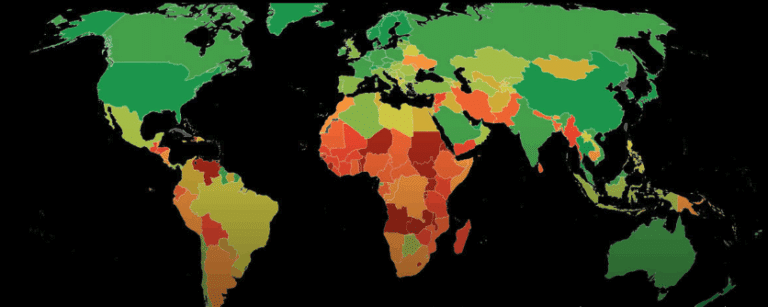This roundtable report reflects the authors’ understanding of key points made in the course of the discussion. It does not necessarily represent the views of the Center on Global Energy Policy. The summary may be subject to further revision.
Contributions to SIPA for the benefit of CGEP are general use gifts, which gives the Center discretion in how it allocates these funds. More information is available on our Partners page. Rare cases of sponsored projects are clearly indicated.
On July 21, Artha Global and the Center on Global Energy Policy (CGEP) at Columbia University held a private roundtable to discuss the challenges Indian cities face in tackling climate change. This was done in the context of the 30th anniversary of India’s 74th Constitutional Amendment Act (CAA), which situated urban governance in urban local bodies (ULBs) by allowing state governments to devolve responsibilities to municipalities around planning and delivery of services. The discussion was intended to spark a wider conversation around whether the capacities of ULBs, which have been weakened by loss of some revenue streams such as octroi revenue (a tax levied on goods entering an urban jurisdiction), are fit to lead urban India’s climate transition challenge.
India made global headlines during the United Nations Climate Change Conference, also known as COP26, as one of the first low-to-middle-income countries to commit to a net-zero target. While lauded, this commitment highlights a largely overlooked challenge: rising urbanization is leading to much higher resource consumption in urban areas, which in turn is leading to greenhouse gas emissions of around two-thirds more per person than in rural areas. Yet few areas of climate policy, such as that related to energy transition, are devolved to municipalities in India.
In a working paper, “Localising Green Transitions in India,” Artha Global attempts to sketch the full potential of the role of India’s urban areas in the country’s transition to net zero. It finds that centralized decision-making and funding, along with weak capabilities at the municipal level, undermine the role ULBs can play in addressing challenges, whether the energy demand of buildings, transport emissions from crowded roads, or industrial fumes on city fringes. Discussing the findings of this paper, the roundtable focused on ways to empower metropolitan units, connect urban planning with public health goals, and increase collaboration between the state, markets, and civil society to accelerate green transitions.
Expand the Jurisdiction of the 74th CAA
Participants in the roundtable, from frontline practitioners to academics, agreed that categorizing what is urban and what is not has political economy consequences. As they discussed, a conversion from rural to urban implies less power for political heads at both the village and the state levels. This, in part, gives rise to the problem of the census town, or a town that exhibits urban characteristics but is neither statutorily notified and administered as urban nor obligated to provide the same public goods as ULBs. Such towns tend to be situated on the fringes of cities and are associated with issues such as poor transport connectivity and lax planning regulations.
As a potential solution to these problems, participants considered viewing urban settlements as metropolitan regions. Many agreed that cities are metabolic entities, whose complex structures constantly evolve and transform. They should thus be viewed as interconnected systems and networks of infrastructure, people, and commerce. Participants pointed out that viewing settlements as expansive clusters and empowering them with a unified governance structure can help Indian cities overcome several challenges that historical boundaries and census towns on their edges have created. Some also noted that the only governance system set up akin to this is the Zila Parishad at the district level in rural areas.
Participants discussed ways to empower metropolitan units, such as by activating the metropolitan planning committees, mandated in the 74th Amendment. However, one participant noted that in certain metropolitan areas, like in the case of Bengaluru, the metropolitan committee has been notified but hasn’t been funded. While participants acknowledged that state finance commissions can also be a potential route of influence, some felt, based on historically slow progress, that significant lobbying may be required to ensure the transfer of owed funds.
Revisit the 12th Schedule for Better Carbon Management
The 12th Schedule of the Indian Constitution enlists 18 subject matters in which the ULBs can exercise their powers, authority, and responsibilities. These include urban planning, regulation of land use and construction of buildings, planning for economic and social development, public health, sanitation conservancy and solid waste management, urban forestry, protection of the environment, and urban poverty alleviation, among others.
Participants agreed that policies and strategies for better carbon management can be embedded and expanded from current piecemeal efforts (for example, incentives for rooftop solar or electric buses) to focus on emissions reduction in a more holistic manner. For example, they noted that procurement policy could favor fuel switches, renewable energy, or energy efficiency in bids, and subsidies and simplified permitting processes could further aid and promote the adoption of low-carbon design and management solutions.
Reconnect Contemporary Urban Planning to Its Public Health Roots
Participants discussed the complexity—and the long history—of planning for public health in Indian cities. Following a mutiny in 1857, British India introduced urban planning and land-use zoning to improve sanitation in Indian cities. To improve public health in India, urban planning focused on the spatial and social segregation of indigenous and European populations via land-use zoning and regulations. Independent India continued to focus on land-use zoning and regulations to better plan and manage cities. With the stated goal of maintaining or improving the public health of cities, participants observed that India prioritized expansion and upgradation of centralized infrastructures—such as building sewerage networks, allocating land for sewage treatment plants, and augmenting treatment capacity.
The urban sanitation systems for a city and its planning, development, operation, and maintenance involve multiple agencies at the state, city, and district levels. Participants noted that in some cities, like the union territory of Delhi, the central government has a role to play as well. Many participants felt that this overlap of functions across different levels of governance, without equitable devolution of funds and functionaries or clarity of the roles and jurisdictions, leads to mismanagement.
Participants agreed that the scope for public health in India needs to expand beyond water and waste management systems or building bylaws regulating ventilation. They suggested that planners approach it more holistically, allowing cobenefits from synergies in climate and health policy—such as emphasizing the role of public parks in improving well-being, promoting healthy lifestyles, and acting as carbon sinks. A participant shared that in the city of Ahmedabad the same officer was put in charge of climate and health to try to improve such synergies. Another offered a wider warning around both health and climate: without careful consideration, informal settlements and the urban poor could end up being left out, undermining the efficacy of policy actions.
Bridge the Gap between Intent and Action
Participants agreed that cooperation between state, markets, and civil society—and not state action alone—will set the pace for climate action and sustainability. Some noted that while the state’s role is to frame and deliver policy, society and markets also spur policy change, augment state capacity, and come up with private solutions in India. One participant proposed that markets could start a virtuous cycle of supplying affordable green solutions, which, in turn, would influence demand to achieve scale. For their part, as participants observed, civil society organizations can also deliver collective action through cooperation, local intelligence, and frontline action.
Enabling a greater role for the private sector and civil society in directing, implementing, and planning for climate actions, participants agreed, requires a constant dialogue among academia, businesses, communities, philanthropy, bureaucracy, and politicians. Participants offered a range of suggestions, starting with creating a shared platform at the local level that could gather indicators pertinent across different areas of urban policy in one place to foster better collaboration. Sharing best practices across cities could also help different urban contexts learn from one another. Some hoped that local governments could become fertile grounds for honing political talent with youth contesting elections and delivering performance as a way to move up through the ranks to state and union levels. They added that reforms to allow for mayoral reelections in more states and rationalized affirmative action for local-level elections can help add more talent to government administration.
Looking Ahead
Discussants observed that three decades have passed since the last major reform to urban governance in India. In the intervening years, the urban landscape has changed a lot and has become central to discussions regarding climate change. The workshop concluded with highlighting new areas worth exploring, in particular the potential for international cooperation and partnerships for colearning and leapfrogging the learning curve. As participants noted, such partnerships can evolve into coalitions to influence and build political consensus for more engaged urban climate action. Some also pointed out that the role of green finance and decentralized technology, managed by individuals, communities, and governments, merit greater attention as they have the potential to transform the capacities of urban governments.
As next steps, Artha Global and CGEP will synthesize the issues discussed at the workshop into actionable research questions and develop collaborative research projects to identify evidence-based, policy-relevant, and ready solutions for urban governments in India to consider for adoption and implementation. Lessons learned in India on effective urban climate action could apply to other developing countries in Asia, Africa, and Latin America, and both organizations will proceed with this wider frame in mind.





